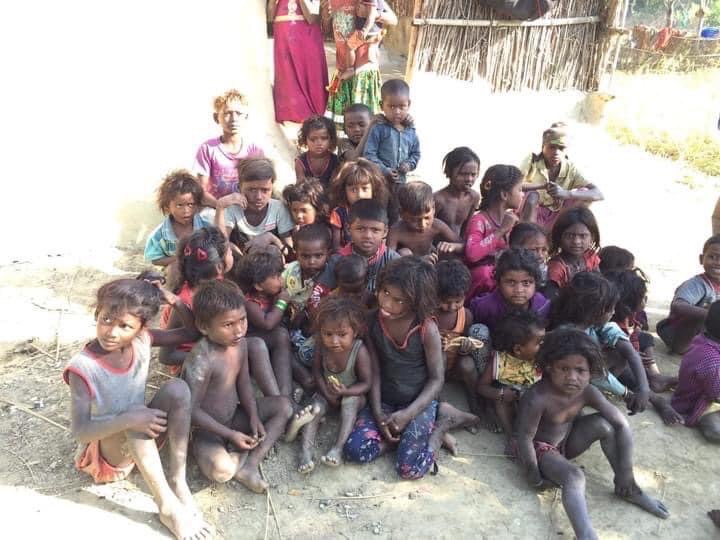Caste System in Nepal
The principal religions of Nepal are Hinduism and Buddhism. With some exceptions, Buddhism does not have a caste system based on religious teachings. In the Buddhist dominated regions of Nepal, there can be a de facto caste system based on the perceived differences of groups. This is not dissimilar to many societies where some groups are viewed as inferior to others because of their professions, accumulated wealth, etc. However, this discrimination does not carry the imprimatur of a religious doctrine. Where Hinduism is the majority religion there is a caste system in place that dates back many centuries. It is the Hindu-derived caste system that impacts the villagers of Tilhi, and it is to this system that we will turn our attention.
Let’s begin by noting that the Government of Nepal legally abolished and criminalized any caste-based discrimination, including "untouchability" (the ostracism of a specific caste) in 1963. Also at that time, Nepal, previously ruled by a Hindu monarchy, became a Hindu nation. In May 2008, Nepal was declared a republic, ending the period of the Hindu Kingdom. Despite the legal protection, caste discrimination remains because the concept is an integral part of the society in the Hindu-dominated regions and because centuries of a caste-based society resulted in the lower castes and untouchables being trapped by educational, economic and social barriers.
The caste system, as originated in India and practiced in Nepal, is complex and most of the details and history are beyond the scope of this article. The aim here is to provide some background on the Nepalese version of the caste system and the status of the Musahar residents of Tilhi in that system. Some references for more information are provided at the end of this article and were used as sources for the written material.
The Nepalese caste system broadly borrows the classical Hindu Chaturvarnashram model, consisting of four broad social classes or varna: Brahmin (priests/scholars), Kshatriya (warrior/nobles), Vaishya (skilled traders/merchants), Sudra (unskilled workers/artisans/farmers). In addition there is a fifth class, Dalits - the members of Hindu society who were considered to be untouchable or unclean (polluting to the other four classes.) The Dalits are now referred to as the Service Caste, and the Musahar are considered to be part of the Service Caste. Dalits were in effect unskilled workers whose professions were determined to be so repulsive that they were not even worthy of inclusion in the Sudra caste. It is probably fair to say that the caste system was designed by the people in the top caste to ensure that there was where they would stay generation after generation. It worked quite well. The approach is basically the same approach that could be found in Christian Europe in the Middle Ages under the teachings of the ‘Great Chain of Being.’ In both cases divine beings were identified as the source of an immutable and unquestionable order of society.
The impacts of the caste system had and continue to have real consequences in the real world. Caste often determines access to land, political power and ability to command human labor. The Brahman and Kshatriya are the highest castes and they have traditionally had access to fertile lands, power and authority. The Vaisyas were second and gained wealth by engaging in business. The Sudras and the Dalits were at the bottom. All non-Hindus, especially Muslims because they tended to live in areas where Hindus also lived, fell under the Sudra category. The lowest castes could not own property or receive an education. Although caste distinctions are no longer supported by law, caste relations have shaped present-day social stratification: Untouchables continue to be the poorest sector of society, while the upper castes tend to be wealthy and politically dominant. While land is still the principal measure of wealth, some castes that specialize in commerce have done better under modern capitalism than have landowning castes. Changes in the economic and political system have opened some opportunities for members of historically disadvantaged castes, but full social equality (while a legal right) remains elusive.
Caste determines an individual's behavior, obligations, and expectations. Violating the rules invites certain punishment such as ostracism. Inter-caste marriage is almost impossible as it carries a social disgrace, especially when it takes place between two castes that are far apart in ranking. The caste of an individual determines that person’s ritual status, purity, and pollution — all important concepts in Hinduism. The issue of purity and being impure exists not only between higher and lower castes but also within one’s caste community. There is an elaborate system of rules on impurity and how to deal with situations where the rules of pollution have been violated.
The low rank of Dalits is based in on the general belief, often associated with Hinduism, that traditional occupations that deal with death, excrement, blood or dirt (such as butchers, leather workers, scavengers, latrine cleaners and street cleaners) are polluting to other castes and touching them should be avoided. Dalits are discriminated against in Nepal in various ways. They are denied entrance to public amenities, denied economic opportunities, and are generally neglected by the state and society. Studies have shown that the incidence of caste-based discrimination is higher in the western region than in the eastern region of the country. It means that the form and extent of discrimination against Dalits are directly correlated with the extent of development of the area where they reside. The discussion of the caste system above should be considered merely as a quick introduction to the concept.
Reference Sources
Provided below are links to websites that provide additional information:
- Wikipedia, Caste System in Nepal
- Wikipedia, Musahar
- CASTE SYSTEM IN NEPAL: HISTORY, PRIVILEGES, POLLUTION AND DALIT DISCRIMINATION - Facts and Details
- Global Voice, Musahars on the margins in Nepal
